By Paul Basha, traffic engineer, Summit Land Management
How much traffic can a freeway handle?
A lot. More detail? As a data-obsessed engineer, can do. The Arizona Department of Transportation provides a highly informative website with extensive traffic count data on both freeways and arterials.
When freeways first open, especially in distant suburban areas, the hourly traffic patterns are very similar to the Red Mountain Freeway, east of Higley Road. Westbound toward the center of the metropolitan area has a dramatic peak in the morning. Eastbound, from the center of the metropolitan area, has a dramatic peak in the evening hours.
Human migration patterns are so predictable. During the morning peak hour (7:00 to 8:00 AM) the total traffic volume is slightly more than 5,000 vehicles.
During the evening peak hour (5:00 to 6:00 PM) the total volume is slightly more than 6,000 vehicles. So, about 2,000 vehicles-per-hour-per-lane. As time passes, or as location changes, traffic patterns change.
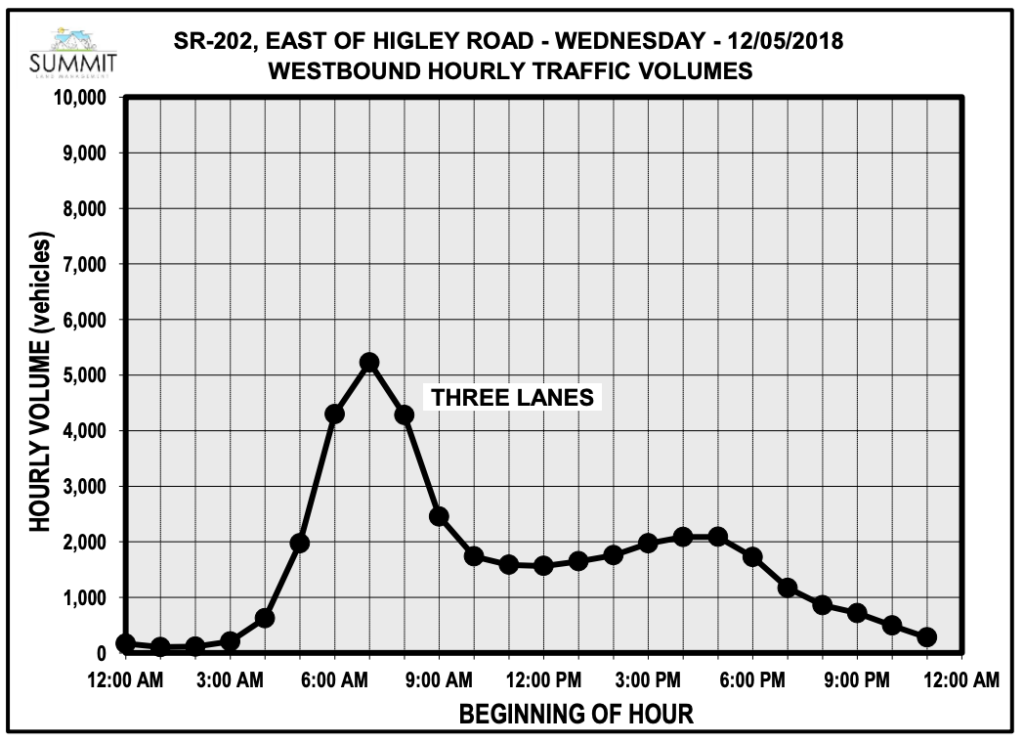
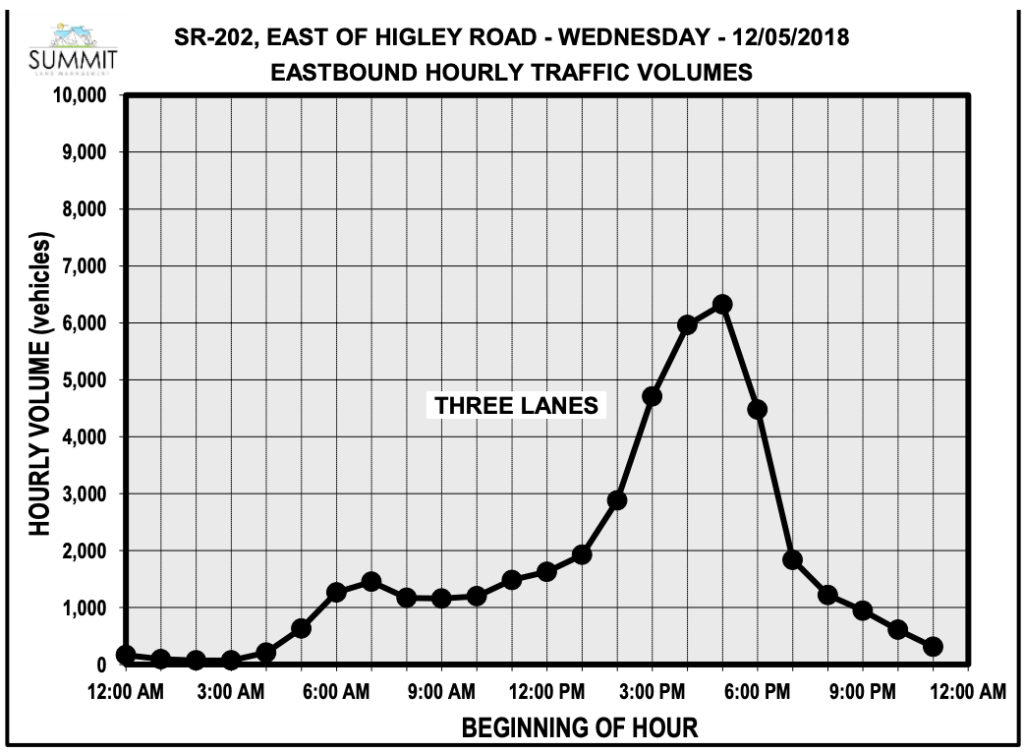
Let’s stay in 2018, and on the Red Mountain Freeway, only closer to the metropolitan area center: just east of 32nd Street, prior to the Piestewa Parkway. The morning and evening peak times remain the same, though the hourly volumes remain high throughout the day. Going home peak remains higher than going to work peak. Please do not tell our bosses or company owners. We leave home at various times in the morning, though manage to leave work at exactly the same time. Also, people who do not work seem obligated to drive when working people are driving home. You non-working people – stop driving between 3:00 and 6:00 in the afternoon!! Drag yourself out of bed to get dressed earlier, and go shopping between 10:00 AM and 2:00 PM!!
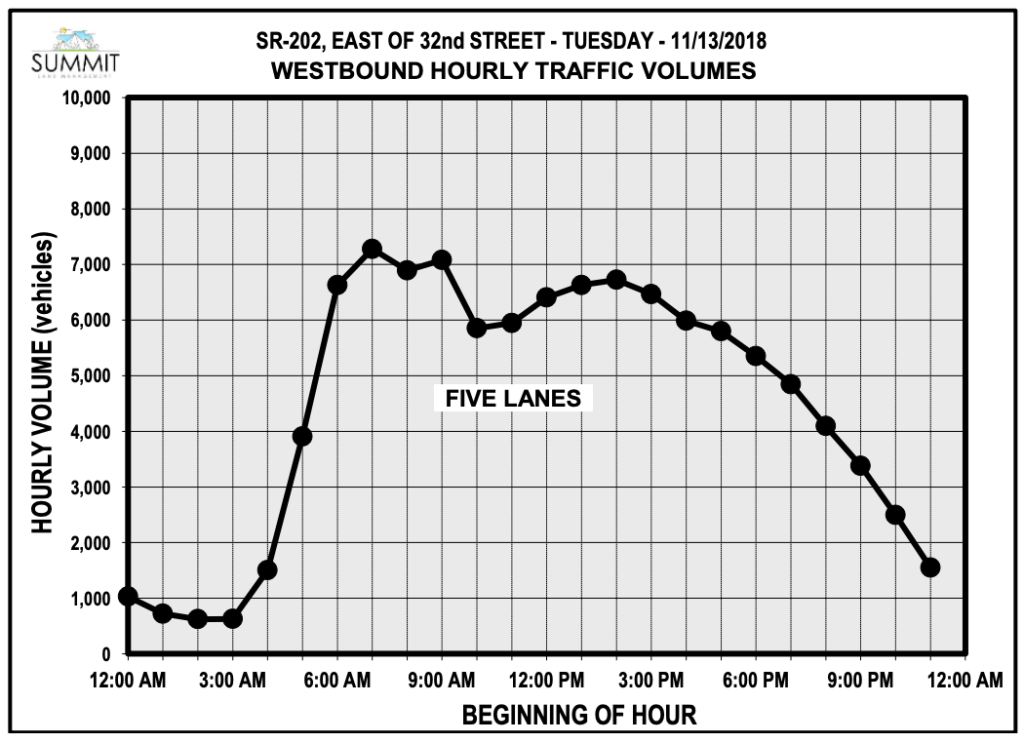
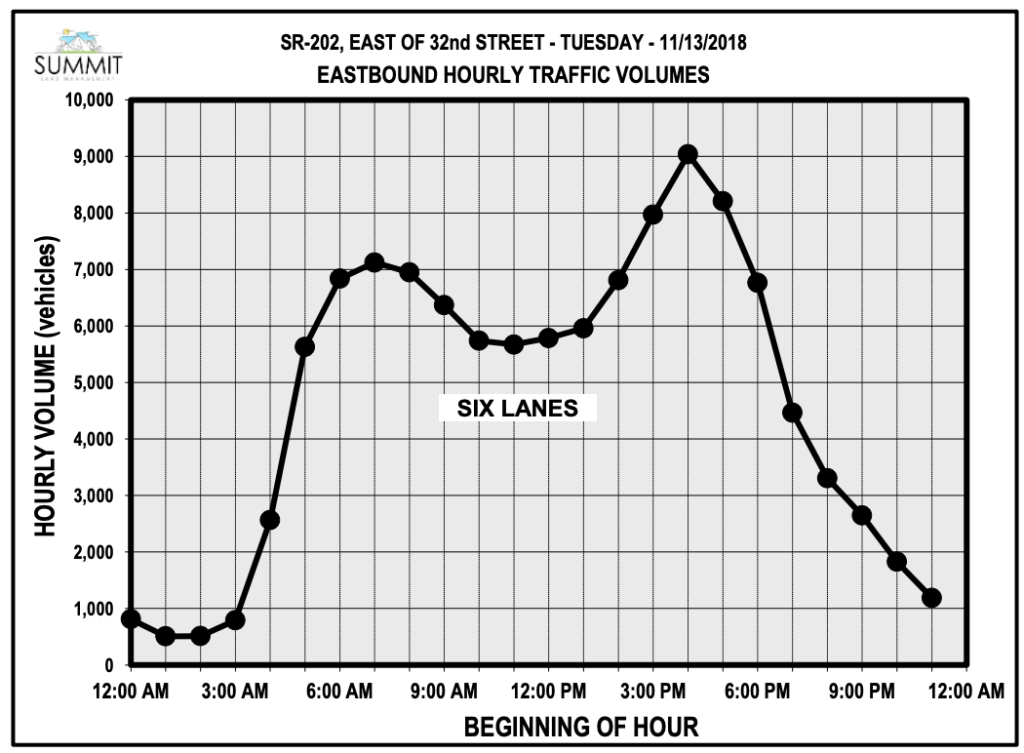
During the morning peak hour (7:00 to 8:00 AM) the total traffic volume is slightly more than 7,000 vehicles. During the evening peak hour (5:00 to 6:00 PM) the total volume is 9,000 vehicles. While there are five eastbound and six westbound lanes, one lane in each direction is for High Occupancy Vehicles, which has much less traffic than the general purpose lanes. (The purpose of the high occupancy vehicle lanes is to have fewer vehicles so they can drive faster.) Subtracting the high occupancy vehicle lanes and volumes; the volume is 1,500 vehicles-per-hour-per-lane.
Common phenomenon, the more lanes on either a freeway or arterial, the lower the capacity on each lane. The lower capacity is caused by vehicles changing lanes, and by some vehicles traveling faster or slower than normal people.
The traffic patterns on freeways throughout the valley are quite similar to these two examples. Freeways in the suburbs have more directionality and more dramatic hourly differences than freeways in the central area.
The Arizona Department of Transportation has many freeway count locations with specific lane volume. The highest freeway lane volume in metropolitan Phoenix is approximately 2,500 vehicles-per-hour.
The Maricopa Association of Governments recently examined metropolitan Phoenix freeway travel in 2020. They used the first week in March 2020 as the baseline, and compared travel to the remainder of the year. Presumably because of lower daily travel resulting from covid, greater Phoenix freeway travel is approximately 10% less. The startling news is that congestion has simultaneously reduced by 40%. (They used an innovative and increasingly common method of determining congestion. Their procedure calculated the additional travel time when the average travel speed was reduced by 20 miles-per-hour or more than the free-flow speed.) A 10% vehicle reduction created a 40% congestion reduction! So, if all of us drive less, we will all get where we’re going faster.
Enough unrealistic pretending, and back to a previous question of “will metropolitan Phoenix have enough street capacity for future growth”. As population and traffic volume increase, the peak hour volume will also increase. More critically, the adjacent hour volumes will increase much more, as shown in the graphs for Red Mountain Freeway, east of 32nd Street. One day, Phoenix freeways will not show much of a peak. All hours between 6:00 AM and 8:00 PM will be at the very uncomfortable maximum of 2,500 vehicles-per-hour.
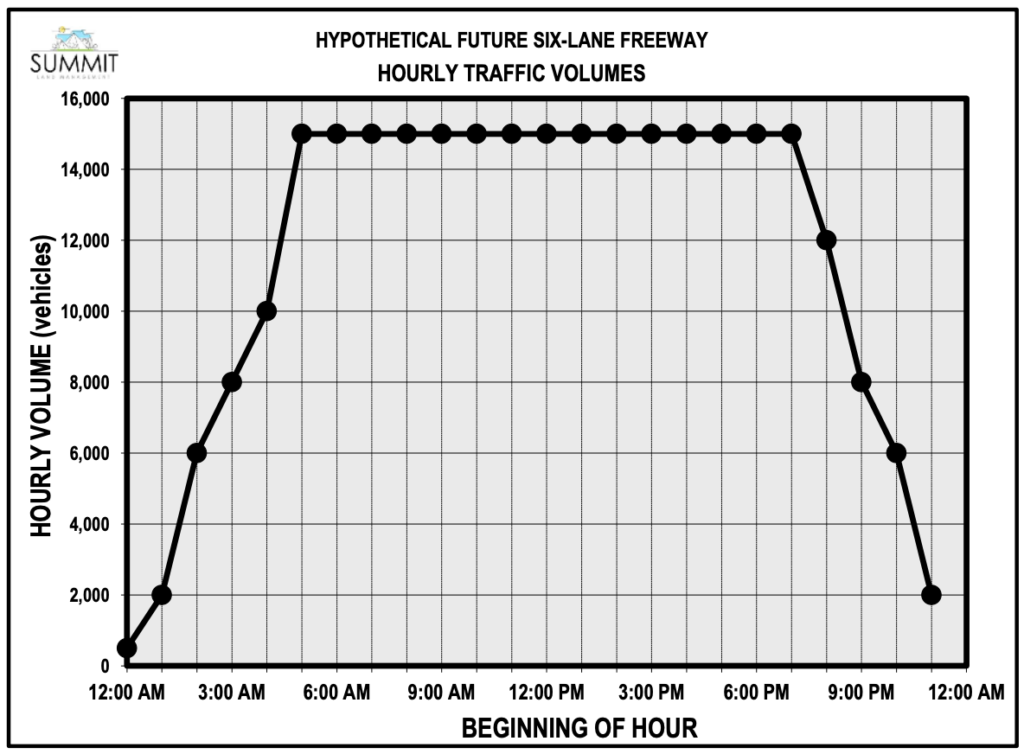
This much traffic will not be pleasant. Though freeways at capacity for 15 hours each weekday will accommodate a 30% population increase in the central city and a 150% population increase in the distant suburbs (assuming that the distant suburbs will have five-lane-per-direction freeways). So, the predicted 65% population increase in the Maricopa Association of Governments region to approximately 7.7M people in 2050 will be no problem. We’ll adapt – Los Angelenos did. The world of Blade Runner 2049 was not that bleak, eh? Curious about something traffic? Call or e-mail Paul at (480) 505-3931 and pbasha@summitlandmgmt.com.




